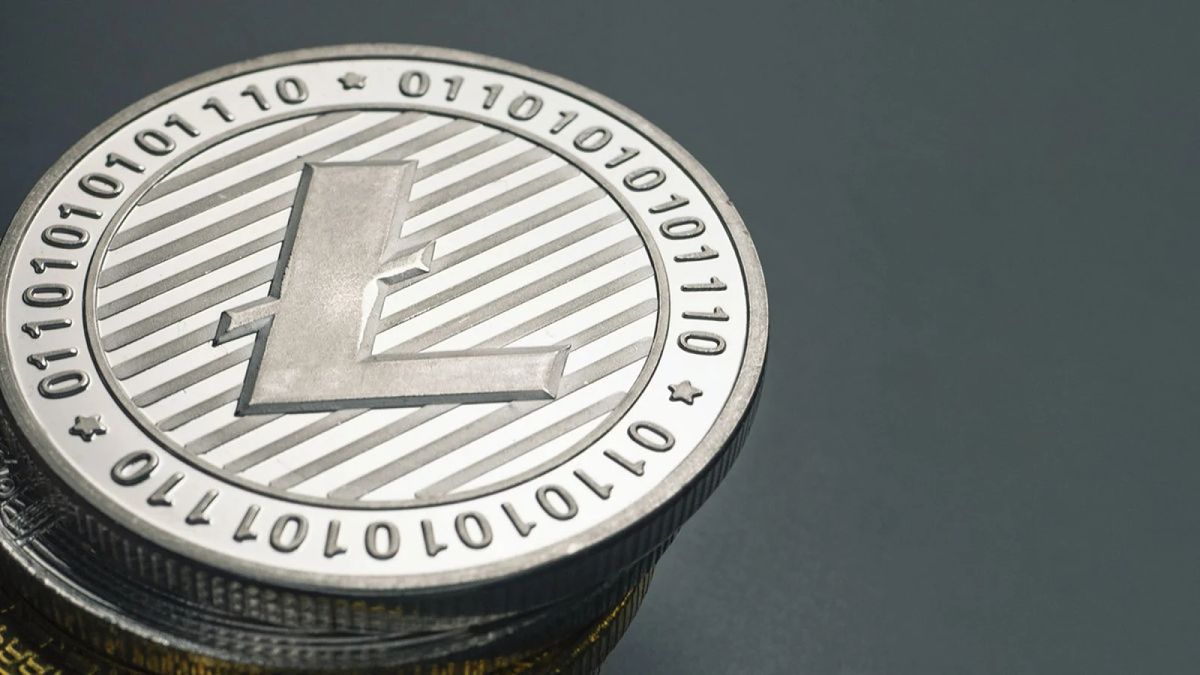Introduction
Welcome to the exciting world of cryptocurrency, where digital currencies are revolutionizing the way we handle financial transactions. As the popularity and adoption of cryptocurrencies have grown, so have the concerns about security and protection against potential threats and risks. In the quest for providing a secure environment for users, the concept of SAFU has emerged as a key principle in the crypto community.
SAFU, an acronym for “Secure Asset Fund for Users,” has become a widely recognized term in the crypto space. It represents the commitment of cryptocurrency exchanges to safeguard the assets of their users. This commitment is particularly crucial in an industry where cyber attacks and hacks are a constant threat.
But where did the term SAFU originate, and how is it utilized in the world of cryptocurrency? In this article, we will delve into the meaning of SAFU, its origins, and its significance in maintaining a secure ecosystem for cryptocurrencies.
With the ever-increasing value and usability of cryptocurrencies, it is essential for users to have confidence in the platforms they use for trading and storing their digital assets. The emergence of SAFU is a direct response to this need for enhanced security measures.
So, let’s dive deeper into the world of SAFU and explore how it is implemented in cryptocurrency exchanges to provide peace of mind for users.
Definition of SAFU
SAFU, an acronym for “Secure Asset Fund for Users,” is a term that represents a dedicated fund maintained by cryptocurrency exchanges to ensure the protection and safety of their users’ assets. It serves as a form of insurance against losses resulting from unexpected events such as hacks, technical glitches, or unauthorized access.
The concept of SAFU reflects a commitment from cryptocurrency exchanges to prioritize the security and protection of their users’ assets. By setting aside a dedicated fund, these exchanges provide an additional layer of assurance to users that their investments are safeguarded.
SAFU funds are typically composed of a portion of the trading and transaction fees charged by the exchanges. These funds are then reserved to cover any potential losses incurred by the exchange or its users. In the event of an incident that leads to financial losses, the SAFU fund can be used to reimburse affected users.
While the specifics of SAFU may vary between exchanges, the overarching goal remains the same: to protect users’ assets and instill confidence in the cryptocurrency ecosystem. Exchanges that prioritize SAFU demonstrate their commitment to maintaining a secure platform and fostering trust with their users.
It is important to note that SAFU is not a guarantee against losses. Instead, it is a proactive measure taken by exchanges to mitigate the impact of unforeseen events. Users are still advised to exercise caution and take responsibility for their own security by employing additional measures such as two-factor authentication, strong passwords, and secure storage of private keys.
Overall, the concept of SAFU highlights the industry’s recognition of the importance of safeguarding users’ assets in the ever-evolving landscape of cryptocurrency. It is a testament to the commitment of exchanges to prioritize security and build a resilient ecosystem for digital assets.
Origin of the Term SAFU
The term SAFU first gained prominence in the cryptocurrency world through the Binance exchange. Binance is one of the largest and most trusted cryptocurrency exchanges globally, known for its dedication to providing a secure and reliable platform for users.
SAFU became widely recognized when the Binance CEO, Changpeng Zhao, used the phrase in a tweet on July 3, 2018. In the tweet, Zhao highlighted the importance of user protection and emphasized Binance’s commitment to ensuring the security of their users’ assets.
The tweet read, “Funds are SAFU,” intentionally misspelling “safe” as “safu” to add a playful and memorable touch. The misspelling quickly caught on and became the signature term for the Secure Asset Fund for Users.
Since then, SAFU has become a widely used term in the cryptocurrency community, representing the shared commitment of exchanges to prioritize the security and protection of users’ assets.
While the specific origin of the term SAFU can be traced back to Binance, the concept it embodies is applicable to the entire cryptocurrency industry. It reflects the growing recognition of the challenges and risks associated with digital assets and the need for robust security measures.
SAFU has gained popularity not only as a term but also as a symbol of trust and reliability. Cryptocurrency exchanges that prioritize SAFU demonstrate their dedication to building a secure infrastructure and fostering trust with their users.
It is worth emphasizing that SAFU has gone beyond being just a term associated with Binance. Many other cryptocurrency exchanges and industry participants have adopted the concept and implemented their own SAFU-like funds and security measures.
Overall, the origin of the term SAFU can be attributed to the Binance exchange and its CEO’s commitment to providing a secure platform for users. However, SAFU has evolved to become a broader concept that symbolizes the commitment of the entire cryptocurrency industry to prioritize user protection and asset security.
Use of SAFU in Crypto
The use of SAFU in the crypto industry has become a standard practice for cryptocurrency exchanges and other platforms handling digital assets. It serves as a vital component in providing protection and reassurance to users in an environment marked by potential risks and vulnerabilities.
SAFU is primarily utilized to mitigate the impact of unexpected events such as security breaches, hacking attempts, or technical failures. By establishing and maintaining a dedicated fund, exchanges can quickly respond to any potential losses incurred by users and restore their confidence in the platform.
One of the key benefits of implementing SAFU is the increased level of trust it fosters among users. Knowing that their assets are backed by a secure fund gives users peace of mind and encourages them to engage in cryptocurrency transactions with confidence.
Additionally, SAFU serves as a deterrent to would-be attackers or hackers. The existence of a protection fund sends a clear message that exchanges are serious about security and are committed to safeguarding user assets. This, in turn, may dissuade potential malicious actors from targeting the platform.
Furthermore, the use of SAFU enhances the reputation and credibility of cryptocurrency exchanges. In an industry that is still relatively young and susceptible to scams and fraud, exchanges that prioritize user protection through SAFU are seen as trustworthy and reliable.
As the cryptocurrency ecosystem continues to evolve, the use of SAFU is expanding beyond exchanges. Other platforms that deal with digital assets, such as decentralized finance (DeFi) protocols and cryptocurrency custodians, are also adopting SAFU-like measures to ensure the security of user funds.
It is important to note that while SAFU provides an additional layer of protection, it does not absolve users from their own security responsibilities. Users should still exercise caution and follow best practices, such as using strong passwords, enabling two-factor authentication, and storing their private keys securely.
In summary, the use of SAFU in the crypto industry has become a standard practice for exchanges and platforms handling digital assets. It helps to build trust, deter malicious activities, and enhance the overall security and credibility of the cryptocurrency ecosystem.
SAFU in Cryptocurrency Exchanges
SAFU plays a critical role within cryptocurrency exchanges, as these platforms are primary targets for hackers and cybercriminals due to the potential for high-value assets held within them. Exchanges that prioritize SAFU take proactive measures to protect their users’ assets and ensure the continuity of their operations.
One of the key ways exchanges implement SAFU is by allocating a portion of the fees collected from trades and transactions into a dedicated fund. This fund serves as a safety net in case of unexpected events that may lead to financial losses for the exchange or its users.
In the event of a security breach or hack, SAFU funds can be used to reimburse affected users and restore their lost assets. This not only helps users recover their funds but also showcases the exchange’s commitment to user protection and fosters trust and confidence in the platform.
SAFU measures within exchanges are not limited to just financial protection. Exchanges also invest heavily in robust security systems and protocols to minimize the risk of unauthorized access and mitigate potential vulnerabilities. They employ advanced encryption methods, multi-factor authentication, and regular security audits to ensure the safety of user funds.
Moreover, exchanges often maintain reserve wallets that are separate from the main system and offline, commonly referred to as cold wallets. These cold wallets store a significant portion of the platform’s assets and protect them from being accessed remotely. By storing funds in cold wallets, exchanges can significantly reduce the risk of loss due to hacking or other security breaches.
Cryptocurrency exchanges that prioritize SAFU also provide transparent reporting and communication in the event of any security incidents. They promptly notify their users about the incident, the impact, and the steps being taken to rectify the situation. This open and transparent approach enhances user trust and demonstrates a commitment to accountability and proactive risk management.
In summary, SAFU forms an integral part of cryptocurrency exchanges, enabling them to safeguard user assets, maintain operational continuity, and foster trust within the crypto community. By implementing dedicated security funds, employing robust security measures, and prioritizing transparency, exchanges demonstrate their commitment to user protection and create a more secure environment for digital asset trading.
SAFU and Security Measures
SAFU is closely intertwined with various security measures implemented by cryptocurrency exchanges to protect the assets of their users. By combining SAFU with robust security practices, exchanges can create a fortified environment that minimizes the risk of unauthorized access, theft, and loss of funds.
One of the primary security measures implemented by exchanges is the use of advanced encryption techniques. Encryption ensures that sensitive user data and transaction information are securely stored and transmitted, making it significantly harder for hackers to intercept or manipulate the data.
In addition to encryption, exchanges often employ strong authentication protocols, such as two-factor authentication (2FA). 2FA adds an extra layer of security by requiring users to provide a second form of authentication, such as a unique verification code generated by a mobile app or sent via SMS, in addition to their login credentials.
Cryptocurrency exchanges also enforce strict know-your-customer (KYC) procedures to verify the identity of their users. These procedures help prevent fraudulent activities and ensure that only legitimate users are granted access to the platform.
Another security measure commonly implemented by exchanges is regular security audits. These audits are conducted by independent third-party firms to assess the effectiveness of the exchange’s security infrastructure and identify any potential vulnerabilities. By regularly reviewing and updating security measures, exchanges proactively address potential weaknesses and stay one step ahead of emerging threats.
Furthermore, exchanges employ a variety of monitoring and detection mechanisms to identify suspicious activities and mitigate potential risks. These include real-time transaction monitoring, anti-money laundering (AML) systems, and anomaly detection algorithms, among others. By continuously monitoring the platform for any unusual behavior, exchanges can take immediate action to prevent or mitigate security breaches.
Emerging technologies such as blockchain are also utilized by exchanges to enhance security. The decentralized nature of blockchain makes it resistant to tampering or alteration, thereby increasing the overall security of transactions and user data.
Overall, the integration of SAFU with robust security measures forms a comprehensive approach to protect user assets in cryptocurrency exchanges. By leveraging encryption, strong authentication protocols, KYC procedures, security audits, continuous monitoring, and blockchain technology, exchanges can create a secure environment where users can confidently transact and store their digital assets.
Examples of SAFU in Action
SAFU has proven its importance and effectiveness in protecting user funds during unfortunate events within the cryptocurrency industry. Several examples highlight how exchanges utilizing SAFU have responded to security incidents and demonstrated their commitment to compensating users for their losses.
One notable example is the Binance exchange, which experienced a major security breach in May 2019. Hackers gained access to the exchange’s hot wallet and stole over 7,000 BTC, worth approximately $40 million at the time. Despite the significant loss, Binance immediately activated its SAFU fund and covered the entire amount, ensuring that no users suffered any financial losses as a result of the breach. The incident showcased Binance’s commitment to user protection and their ability to swiftly address and resolve security incidents.
Another example is the case of the Bitfinex exchange. In August 2016, Bitfinex suffered a breach in which approximately 120,000 BTC, worth over $72 million, were stolen from user accounts. To mitigate the impact on affected users, Bitfinex employed SAFU funds to reimburse them for their losses. The implementation of SAFU helped restore user confidence in Bitfinex’s platform and demonstrated the exchange’s commitment to safeguarding user assets.
SAFU also played a significant role in the aftermath of the Coincheck hack in January 2018. Coincheck, a prominent Japanese cryptocurrency exchange, experienced a massive security breach in which over 500 million NEM coins (XEM) were stolen, amounting to approximately $530 million at the time. Despite the staggering loss, Coincheck promised to repay each affected user using its own funds as a form of SAFU. The exchange took responsibility for the incident and demonstrated its commitment to restoring user trust through compensation and enhanced security measures.
These are just a few examples of how exchanges have employed SAFU to safeguard user funds and address security incidents. By utilizing dedicated funds, exchanges can not only compensate affected users promptly but also reassure the wider community of their commitment to user protection and security.
It is important to note that SAFU is not just limited to major security breaches. Exchanges may also utilize SAFU to address smaller incidents, such as technical glitches or disruptions in services, that may result in financial losses for users. The availability of SAFU funds provides exchanges with the means to swiftly address and rectify such incidents, ensuring minimal impact on user funds.
In summary, the examples of Binance, Bitfinex, and Coincheck demonstrate the practical implementation of SAFU in addressing security breaches and compensating affected users. These cases underline the importance of dedicated funds to protect user assets and provide prompt recovery measures during challenging situations.
Importance of SAFU in Crypto
The importance of SAFU (Secure Asset Fund for Users) in the world of cryptocurrencies cannot be overstated. It serves as a crucial element in building trust, protecting user assets, and promoting the long-term sustainability of the crypto ecosystem.
One of the key reasons why SAFU is essential is the inherent nature of the cryptocurrency industry itself. Unlike traditional financial systems, cryptocurrencies are decentralized and operate on open networks, making them susceptible to various types of security risks. Cyberattacks, hacks, and fraudulent activities pose significant threats to user funds and the overall credibility of the crypto industry.
By implementing SAFU, exchanges and platforms demonstrate their commitment to protecting user assets. Users can rest assured that even in the event of a security breach or unforeseen incident, their funds are safeguarded and they will be compensated for any losses.
SAFU also contributes to the broader goal of fostering trust and credibility within the crypto industry. The transparency and accountability demonstrated by exchanges that prioritize SAFU help establish them as reliable and trustworthy platforms, encouraging wider adoption and participation in the crypto ecosystem.
Furthermore, the existence of SAFU can act as a deterrent for potential attackers or hackers. The knowledge that exchanges prioritize the security of user assets and have measures in place to address losses creates a less attractive target for malicious actors.
Importantly, SAFU enhances the perception of cryptocurrencies as viable and secure assets. As more individuals and institutions consider entering the crypto market, the presence of dedicated funds for user protection provides an added layer of reassurance, potentially attracting new participants and increasing overall market liquidity.
SAFU also contributes to the stability and resilience of the cryptocurrency market. In the face of incidents that may otherwise lead to panic and market volatility, the existence of SAFU funds can help restore confidence and mitigate negative market impacts. This stability benefits all participants in the crypto ecosystem, including traders, investors, and businesses.
Moreover, SAFU fosters responsible behavior and risk management among exchanges. The establishment of dedicated security funds incentivizes exchanges to continually invest in robust security measures, employ advanced technologies, conduct regular audits, and keep pace with evolving security threats. This creates a positive feedback loop of continuous improvement and raises the overall security standards within the industry.
In summary, SAFU is of utmost importance in the cryptocurrency industry. It bolsters trust, protects user assets, deters potential attackers, enhances market stability, and contributes to the overall credibility and sustainability of the crypto ecosystem. By prioritizing user protection through SAFU, exchanges and platforms play a crucial role in promoting the secure and responsible growth of cryptocurrencies.
Conclusion
The concept of SAFU (Secure Asset Fund for Users) has become an integral part of the cryptocurrency industry, emphasizing the importance of safeguarding user assets and promoting the overall security of the ecosystem. SAFU represents a commitment by cryptocurrency exchanges to prioritize user protection and maintain trust within the community.
Through the implementation of SAFU, exchanges allocate dedicated funds to compensate users in the event of security breaches, hacks, or other unforeseen incidents. This provides users with confidence and assurance that their assets are protected, even in challenging circumstances.
SAFU goes beyond financial compensation, as it also encompasses the adoption of robust security measures such as encryption, strong authentication protocols, KYC procedures, security audits, and continuous monitoring. This comprehensive approach ensures that exchanges are equipped to handle potential threats and minimize vulnerabilities.
Moreover, the existence of SAFU enhances the credibility of cryptocurrencies as secure and reliable assets. It showcases the commitment of exchanges to user protection, fosters trust within the community, and attracts new participants to the crypto market.
The examples of Binance, Bitfinex, and Coincheck highlight the practical application of SAFU in mitigating the impact of security incidents and compensating affected users. These cases demonstrate the effectiveness of dedicated funds in restoring user trust and normalizing operations after unforeseen events.
In conclusion, SAFU plays a vital role in the cryptocurrency industry by emphasizing the significance of user protection, strengthening the security of exchanges, fostering trust, and promoting the long-term sustainability of the crypto ecosystem. As the industry continues to evolve, the implementation of SAFU will remain a fundamental principle in securing the assets of cryptocurrency users and building confidence in this innovative financial landscape.

























